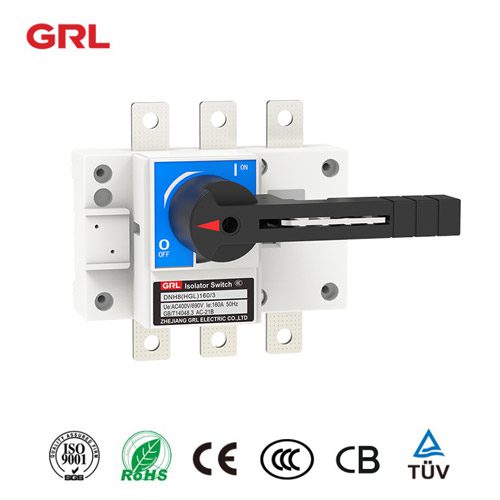
# Transfer Load Disconnector: A Key Component in Power Distribution Systems
## Understanding the Role of Transfer Load Disconnectors
Transfer load disconnectors are essential components in modern power distribution systems. These devices serve a critical function in managing electrical loads during maintenance, repairs, or emergency situations. By providing a safe and efficient means to transfer electrical loads from one power source to another, they help maintain continuous power supply while ensuring worker safety.
The primary purpose of a transfer load disconnector is to isolate sections of an electrical system while allowing power to be rerouted through alternative pathways. This capability is particularly valuable in industrial settings, commercial buildings, and critical infrastructure where uninterrupted power is crucial.
## How Transfer Load Disconnectors Work
Basic Operation Principles
Transfer load disconnectors typically consist of switching mechanisms that can alternate between multiple power sources. When activated, they first break the connection with the current power source before establishing a connection with the alternate source. This break-before-make operation ensures there’s no dangerous overlap or short-circuiting between sources.
Manual vs. Automatic Transfer
These devices come in both manual and automatic configurations. Manual transfer disconnectors require operator intervention, while automatic versions can detect power failures and switch to backup sources without human involvement. The choice between these types depends on the specific application requirements and safety considerations.
## Key Features and Benefits
Safety Features
Modern transfer load disconnectors incorporate multiple safety features including:
- Visible break indicators
- Lockout/tagout capabilities
- Arc suppression technology
- Mechanical interlocks to prevent improper operation
Operational Advantages
The implementation of transfer load disconnectors offers several operational benefits:
- Minimized downtime during maintenance
- Improved system reliability
- Enhanced worker safety
- Flexibility in power source management
## Applications Across Industries
Industrial Facilities
In manufacturing plants, transfer load disconnectors enable scheduled maintenance without disrupting production processes. They allow critical equipment to remain operational by switching to backup power sources when primary sources need servicing.
Commercial Buildings
Office complexes and retail spaces utilize these devices to maintain essential services like lighting, elevators, and security systems during power transitions or outages.
Healthcare Institutions
Hospitals and medical facilities rely on transfer load disconnectors to ensure uninterrupted power to life-saving equipment and critical care areas.
## Maintenance and Safety Considerations
Proper maintenance of transfer load disconnectors is essential for reliable operation. Regular inspections should include:
- Checking for signs of wear or damage
- Verifying proper mechanical operation
- Testing electrical continuity
- Ensuring all safety features function correctly
When working with transfer load disconnectors, personnel must always follow lockout/tagout procedures and use appropriate personal protective equipment. Proper training on device operation and emergency protocols is essential for all authorized personnel.
Keyword: transfer load disconnector
## Future Developments in Transfer Load Technology
The field of transfer load disconnectors continues to evolve with advancements in materials, switching technology, and smart monitoring capabilities. Future developments may include:
- Integration with IoT for remote monitoring
- Improved arc suppression techniques
- More compact designs with higher capacity
- Enhanced predictive maintenance features
As power distribution systems become more complex and reliability requirements increase, the role of transfer load disconnectors will continue